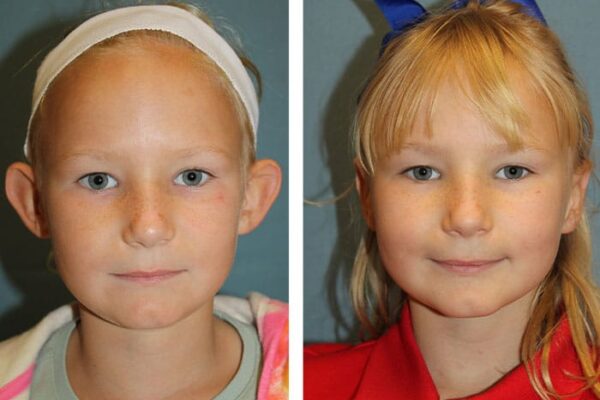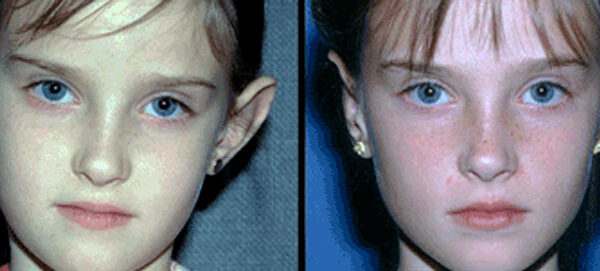Otoplasty, commonly known as ear surgery, is a cosmetic procedure that reshapes and repositions the ears for improved appearance and symmetry. Typically performed to reposition or “pin back” large and/or protruding ears, otoplasty can also correct deformities, asymmetry, or injuries. By surgically adjusting the shape, size, or position of the ears, otoplasty in Gulf Shores can boost self-confidence and alleviate concerns about ear appearance.
What Is Otoplasty?
Before birth, during embryonic development, everyone’s ears project straight out away from the head. But by the ninth month, they usually assume a position closer to the head and develop the natural folds and convolutions. In patients whose ears are too prominent and lack the usual folds and convolutions, this aspect of the developmental process stopped short of completion.
The otoplasty procedure is designed to “complete” the developmental process by positioning the ears closer to the head and attempting to create the folds by placing sutures in the ear cartilages so that they can “heal” in their desired position. When the ear cartilage is thick and strong, it tends to resist being repositioned, and a “tuck” might be indicated within 6-12 months.

When Is Otoplasty Done?
In children, the surgery is preferably done before they begin school to avoid classroom teasing and “nicknames,” but it can be done at any age. By the age of six, the ears have reached about 90 percent of their adult size, so little growth of the ears occurs after this time. Because the anterior halves of the head develop embryologically from two sides, the two ears are rarely identical prior to surgery. If they are not, chances are there will also be some differences in them after otoplasty in Gulf Shores.
The predisposition to have protruding ears tends to run throughout a family tree, although with a varying degree of penetration. In some cases, an entire generation may be skipped. Some family members will have ears that look fairly normal, but others will have one or usually both ears that protrude, at least to some degree. Even if only one ear appears to protrude excessively, it is usually necessary to correct both in order to get the desired surgical result.
Ear Surgery
Before & Afters
*Each patient is unique, and individual results may vary.
Patient Testimonials
”Hands down the most pleasant experience I have ever had in a doctors office. The staff is extremely professional and they take care of you from the time you get there to the time you leave. Highly recommended!
-B.S.
Otoplasty Post Operative Instructions
A turban-type bandage is worn about the head to cover the ears the night after surgery. After this bandage is removed, usually the next morning, the patient wears a stocking cap or headband pulled down over the ears while sleeping to protect them for another two weeks. Most patients may return to work or school in 5-7 days following surgery.
The sutures used to close the skin incisions behind the ears usually dissolve. If they are properly soaked with hydrogen peroxide and applied with cotton-tip applicators as directed, they generally do not require removal.
This treatment regimen should be repeated six times daily for two weeks. Do not pull the ears forward under any circumstances!
When the dressings are first removed, the ears will appear to have been over-corrected or too close to the head, but in time, they begin to assume their new position. With any surgery, it takes time for healing to be complete, so do not try to evaluate the results too early. We want to monitor the healing, so please keep the postoperative appointments.
The McCollough Otoplasty Approach
In younger children, a general anesthetic is given at the hospital, and in teens and adults, “twilight” anesthesia may be administered at the clinic. The patient is discharged 24 hours after surgery and remains ambulatory thereafter. In most cases, there is minimal pain after this type of surgery.
The scars resulting from the surgical incisions are located behind each ear and are hidden in the creases behind them. It is rare for these scars to thicken or hypertrophy. If this should happen, they can usually be softened by cortisone.

Other Types of Ear Surgery
Earlobe Repair & Reduction
Earlobe repair is the process of repairing torn earlobes, or those with large holes created by wearing heavy ear rings. The procedure is performed in the office under local anesthesia and involves cutting a small notch in the torn lobe and then suturing the torn sections back together. The aging process also affects the ear, and earlobes often become stretched and may “droop,” bringing the whole face down. Similar to earlobe repair, excess tissue is removed, and the edges are brought together. Ear lobe reduction is often performed at the time of facelifting.
Correcting Newborn Ear Deformities
Congenital ear deformities are common and can cause significant psychosocial distress. Auricular molding/splinting can be successful in correcting various types of congenital deformities when performed within the first week of life. A custom-made rigid elastic split is applied and secured with surgical tape and surgical glue. Splints are not painful and do not disrupt normal infant activities. They are removed after 14 days, and ears are re-evaluated. Additional re-splinting may be required.

Schedule Your Consultation
With McCollough Plastic Surgery
Dr. McCollough, a double board-certified facial plastic surgeon, is a renowned expert dedicated to enhancing not only his patients’ facial appearance but also their quality of life. At McCollough Plastic Surgery, we offer a trusted destination for comprehensive transformations, situated in the scenic heart of Craft Farms, Alabama, near the sugar white sandy beaches of Gulf Shores and Orange Beach, Alabama. Contact us today to schedule your consultation for otoplasty in Gulf Shores and address your facial enhancement concerns.




